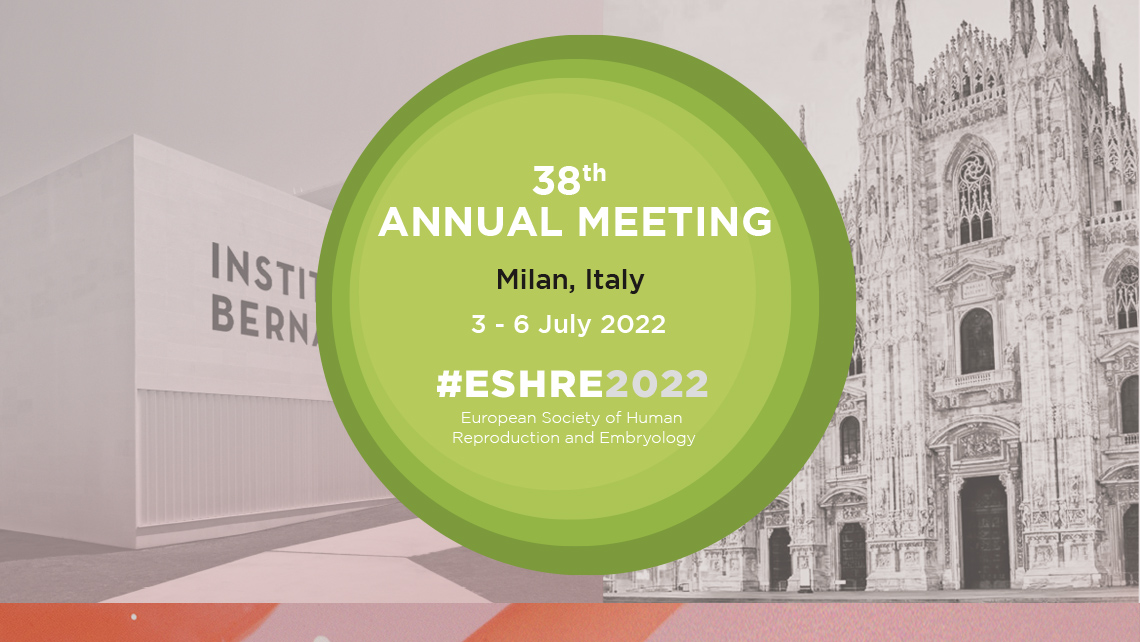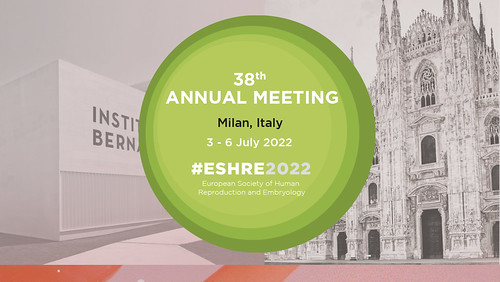Instituto Bernabeu makes its mark with 15 research projects at the ESHRE 2022 international congress
July, 1st 2022

Instituto Bernabeu is once again present at one of the leading international congresses in the world of fertility. From 3 to 6 July, Milan (Italy) is hosting the 38th Congress of the European Society of Human Reproduction and Embryology (ESHRE), an event in which Instituto Bernabeu actively participates each year. On this occasion, the clinic is making its mark at the scientific meeting with 15 pieces of research work. Their particular relevance and interest to the field mean that three of them are oral presentations delivered by the lead authors.
On 4 July, Dr José Antonio Ortiz, a biochemist and molecular biologist, is responsible for presenting research entitled ‘Factors affecting biochemical pregnancy: machine learning-assisted identification’. The study employs different artificial intelligence algorithms to address the factors associated with biochemical pregnancy loss.
Another of the oral presentations at ESHRE asks if grouped embryo culture improves blastocyst formation compared with the results of individual embryo culture. On 4 July, Miguel Herreros, a biotechnologist, will present the study ‘Impact of group embryo culture vs individual embryo culture strategies on blastocyst rate and quality’. This randomised prospective study analysed over 800 embryos over the course of one year.
Instituto Bernabeu’s third oral presentation at the scientific gathering will take place on Tuesday 5 July and will be delivered by Laura Martí. It is entitled ‘The use of cumulus cells (CCs) to select spermatozoa for intracytoplasmic sperm injection improves blastocyst development and quality’.The study assesses success rates of ICSI treatment with the use of natural barriers for spermatozoa selection.
A further 12 scientific studies by Instituto Bernabeu have been selected by ESHRE 2022 for presentation in poster format. They address research into reproductive medicine from the perspective of different lines of activity such as embryology, molecular biology and/or andrology.
ORAL PRESENTATIONS:
The use of cumulus cells (CCS) to select spermatozoa for intracytoplasmic sperm injection improves blastocyst development and quality
L. Martí, J. Ten, M. Herreros, N. Díaz, A. Rodríguez-Arnedo, J. Guerrero, J.A. Ortiz, A. Bernabeu, R. Bernabeu
Impact of group embryo culture vs individual embryo culture strategies on blastocyst rate and quality.
M. Herreros, L. Martí, N. Díaz, M.C. Tió, A. Rodríguez-Arnedo, J. Guerrero, J. Ortiz, J. Ten, R. Bernabeu
Factors affecting biochemical pregnancy: machine learning-assisted identification.
J.A. Ortiz, B. Lledó, R. Morales, A. Máñez, A. Cascales, A. Rodríguez-Arnedo, A. Bernabeu, R. Bernabeu
POSTER PRESENTATIONS:
Pharmacogenetic (PGx) Gene-Drug Association in IVF: clinical relevance of a panel test for ovarian stimulation
B. Lledó, J.A. Ortiz, N. Iervolino, A. Bailén, R. Morales, J.C. Castillo, A. Bernabeu,R. Bernabeu
The role of pharmacogenetics for individualized adjuvant therapy in patients with recurrent implantation failures (RIF)
A.M. Fabregat, P. Berenguer, B. Lledó, J.A. Ortiz, A. Bernabeu, R. Bernabeu
The vaginal microbiome in the first trimester of pregnancy is different in spontaneous versus IVF gestation
A. Fuentes, B. Lledó, P. Lozano, A. Cascales, R. Morales, M. Hortal, A. Palacios-Marqués, R. Bermejo, F. Quereda, J.C. Martínez, R. Bernabeu, A. Bernabeu
Follicle-stimulating hormone receptor genotype and its influence on the results of ovarian stimulation using corifollitropin alfa
M. Hortal, A. Cascales, J.A. Ortiz, B. Lledó, J. Guerrero, A. Bernabeu, R. Bernabeu
Identification of spermatogenic infertility phenotypes using next generation sequencing
E.M. García, F.M. Lozano, B. Lledó, A. Turienzo, A. Cascales, J.A. Ortiz, R. Morales, A. Fuentes, A. Bernabeu, R. Bernabeu
Relationship between the quality control parameters in PGT-A results by NGS with the chromosomal mosaicism diagnosis in trophoectoderm biopsies
R. Morales, B. Lledó, J.A. Ortiz, A. Cascales, J. Ten, A. Bernabeu, R. Bernabeu
Factors associated with embryonic mosaicism: a systematic review and meta-analysis
A. Cascales, B. Lledó, J.A. Ortiz, R. Morales, A. Castro, J. Ten, A. Bernabeu, R. Bernabeu
Clinical results in hormone replacement versus natural cycle protocols of endometrial preparation for frozen embryo transfer
J. Ten, E. Abellán, J. Guerrero, J.C. Castillo, A. Bernabeu, R. Bernabeu
Embryo aneuploidy risk is increased in couples with unexplained infertility
A. Pay, A. Turienzo, E.M. García, A. Cascales, A. Pedrosa, J.A. Ortiz, B. Lledó, R. Morales, A. Rodríguez-Arnedo, A. Bernabeu, R. Bernabeu
Time to hatching: the most predictive morphokinetic parameter for embryo implantation in machine learning algorithms following time-lapse incubation and blastocyst transfer in oocyte-donation programs
L. Herrero, J. Ten, A. Linares, E. Álvarez, L. Cascales, S. García, J.A. Ortiz, A. Bernabeu, R. Bernabeu
mRNA COVID-19 vaccine does not influence performance during oocyte donation cycles
A. Bosch, S. Albero, J. Guerrero, J.C. Castillo, A. Bernabeu, J. Ten, R. Bernabeu
The endometrial switch following progesterone exposure correlates with uterine peristalsis
B. Moliner, A. Fuentes, C. Gavilán, B. Alcaraz, A. Herencia, A. Bernabeu, R. Bernabeu

